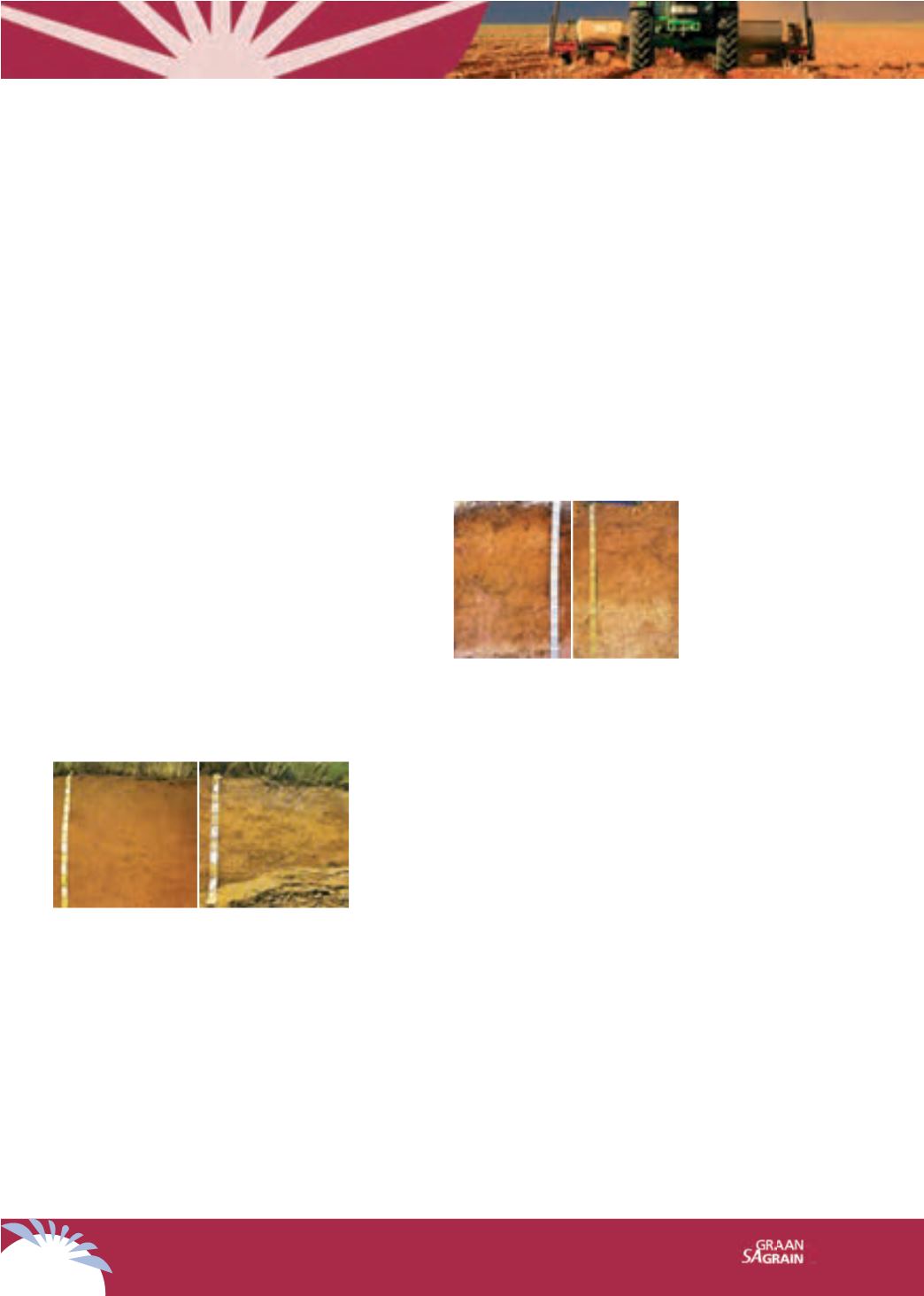

46
GRAANGIDS
2017
GRAIN GUIDE
Tillage of soils in South Africa summarised
The wide variety of soil types found in the crop
areas of South Africa makes it difficult to provide
standard prescriptions for tillage. This wide variety
is attributed particularly to the great variation in
soil properties, climate and the accompanying
production potential.
However, if the soils are
grouped according to the specific climate
zone and texture classes, a few general tillage
guidelines can be provided.
Summer rainfall of between 400 mm and
550 mm per year
Red and yellow sandy soils with less than
6% clay in the topsoil
This group is found mainly in the central
production areas (Western Free State, North
West and Northern Cape) and comprise wind-
deposited soils with less than 6% clay in the
topsoil, less than 8% clay in the subsoil and an
apedal (single-grained) structure. Hutton and
Clovelly soils are the main soil types in this
class. These soils are extremely vulnerable to
wind erosion and subsoil compaction, fertility
is low, as is the water retention capacity in
the absence of a barrier layer. However, soil
types that lack a barrier layer, like the Avalon,
Kimberley and Molopo soils, have a higher
water retention capacity within the root zone.
In order to combat wind erosion and soil-
borne plant diseases and to ensure good root
development, mulch tillage combined with a
deep ripper action, controlled track traffic and
a good crop rotation system are recommended
as the most sustainable system in these soils.
The depth of the water table can be managed
with the aid of a fallow system to the extent that
it is kept about 1 200 mm from the soil surface.
In seasons with excessively high rainfall the
plant establishment can be increased, and a
catch crop can even be used to lower the levels.
Red and yellow sandy soils with 6% to
18% clay in the topsoil
These soils mostly have a poorly developed
structure in the topsoil and consequently have
strong crust-forming properties that lead
to poor aeration and infiltration. The most
common soils in this group are the Clovelly,
Hutton, Bainsvlei, Bloemdal, Avalon, Pinedene
and Kimberley soils. These soils are also subject
to compaction, and if the clay content of the
topsoil is less than 10%, there is also a risk of
wind erosion.
The recommended practices in these soils are
conventional clean tillage, combined with a
ripper action of approximately 350 mm deep
where soil compaction is a problem. As crust
formation is the single biggest problem in
these soils, regular shallow tillage after rain is
required to ensure good infiltration. However,
tillage practices like mulch tillage can be
applied to this soil, provided primary tining to
a depth of 300 mm forms part of the system.
In the shallow, stony soils of the winter rainfall
areas (Western and Southern Cape) tining at
a depth of 150 mm before or during planting
should be adequate.
Soils with between 18% and 25% clay in
the topsoil
Because of the higher clay content of these
soils the structural grade is usually moderate or
stronger. This group contains a large variety of
soils like the Valsrivier, Sepane, Oakleaf
Hutton and Clovelly
Bainsvlei and Bloemdal
Continued on p. 49
1
2
3

















